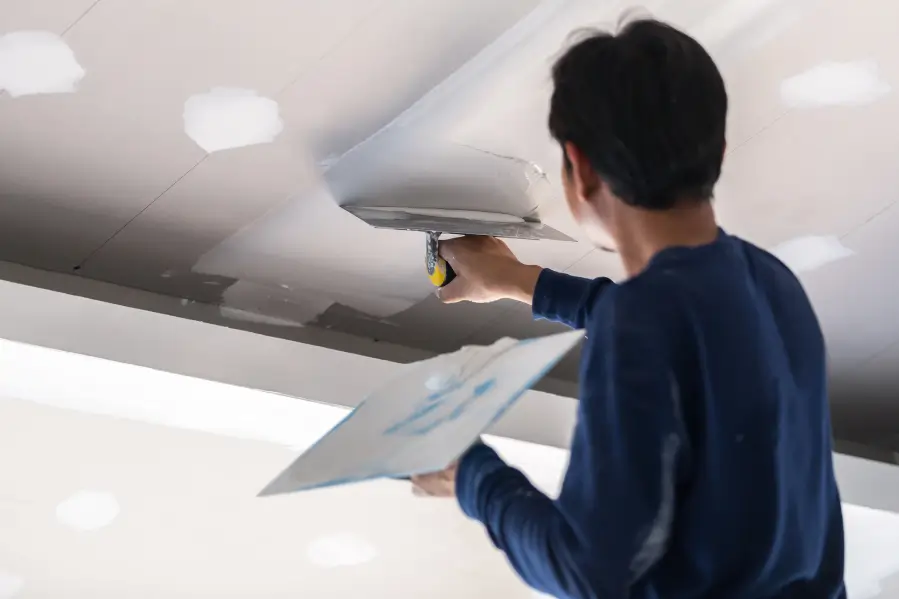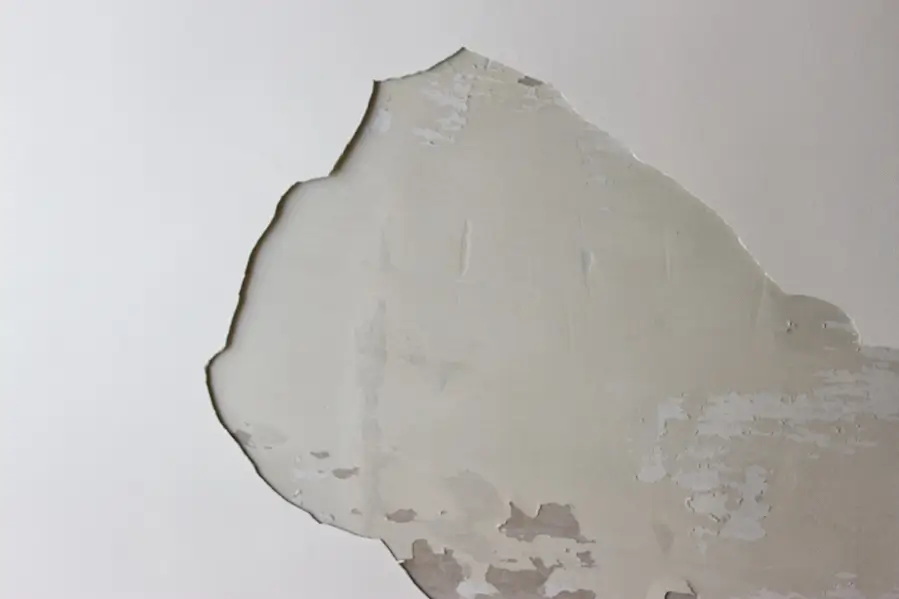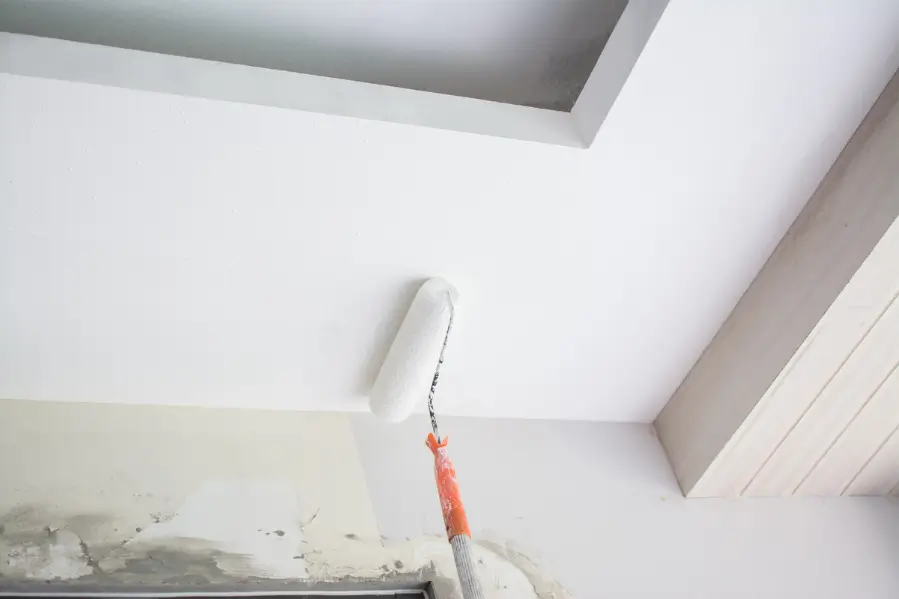Plaster is that ubiquitous substance found in older homes, durable, aesthetically pleasing, and prone to cracks, holes, and even sagging. These damages often occur from moisture infiltration, structural shifts, or plain wear and tear.
The good news is that with the right approach, a plaster ceiling can regain its look without the need for full substitution. Such a task intimidates most homeowners, but it can very much be done as a DIY job if approached step by step.
This guide walks you through step-by-step identifying what type of damage you are dealing with to achieve an uninterrupted covering on the existing surface.
7 Steps You Need to Consider to Repair a Plaster Ceiling
You are good to go with gathering the right material and planning the right method for repair after correctly identifying the problem with the help of the next steps.
Step 1: Identify the Damage

Before restoration begins, the extent of the damage needs to be determined. Several problems may be associated with plaster ceilings, and they have unique restoration methods:
- Cracks: Some cracks may be superficial but could become expensive if not dealt with. Usually, cracks develop due to building movement or temperature variations.
- Potholes: These are holes probably resulting from an accidental impact or water penetration that caused a part of the plaster to break away.
- Drooping or falling off: This is when the plaster loses the attachment to the wooden lath at the back, usually caused by time, moisture, or movement in the building.
Step 2: Gather Required Materials and Tools
Here is the list of common tools and materials to be used in repairing a plaster ceiling:
| Materials | Tools |
|---|---|
| Joint Compound | Putty Knife |
| Wire Mesh (for large holes) | Trowel |
| PVA (bonding agent) | Sanding Sponge |
| Paint and primer | Utility Knife |
| Dust sheets or Tarps | Sandpaper |
| Patching Compound | Ladder |
Step 3: Prepare the Area
Always cover everything around the area before actually doing the repair work. Plaster work makes dust and debris: hence, remove or cover furniture and floors with dust sheets, put in a safe ladder or scaffolding steadily to reach up to the ceiling.
Make sure that the room is well-ventilated to facilitate the cleaning of the dust, and at the same time increases drying times. From here you can start working on the damaged sections.
Step 4: Fixing Cracks in a Plaster Ceiling
Of all the possible issues with plaster ceilings, fixing ceiling cracks might perhaps be one of the most common, but lucky for you, perhaps one of the easier to fix.
- Score the Crack: Using a utility knife, pull the crack open just slightly. Now this might sound nonsensical, but by making that little V groove, you’re giving the plaster patch the opportunity to dig into the surface better.
- Apply the bonding agent: Apply the PVA bonding agent across the crack using a brush. This will help the fresh layer of plaster to bond well to the old plaster.
- Prepare Plaster: The preparation of the patching compound should follow the manufacturer’s instructions. The mixture should be relatively smooth.
- Fill the Crack: Fill the crack by using a putty knife and compressing the compound into the groove for a tight bond. Use a trowel or a wide putty knife to flatten the patch. Make sure that the patch is flattened to the rest of the ceiling.
- Sanding: After the plaster has dried, lightly sand the area to make it blend with the remainder of the ceiling. Work from medium grit and then finer grit to get a smooth finish.
Step 5: Repairing Holes in a Plaster Ceiling

Although fixing holes in ceilings are significantly more complicated than cracks, especially if they are large, a ceiling can be returned to its normal state if approached the right way.
- Clearing the Damaged Area: Applying a utility knife in the areas around the hole will cut that plaster area and make clean lines. Then remove loose plaster or debris. Cut a piece of wire mesh to go over the hole ensuring the hole is over 2 inches in diameter. Screw or nail the wire mesh to the wood lath behind the plaster.
- Bonding agent: Brush a PVA bonding agent to the area so the new plaster will stick well.
- Apply the First Layer of Plaster: Mix a bucket of plaster and smear it over the hole, smearing it into the wire mesh if used. The first layer should be fat enough to fill the hole but left with a little depression to leave space for a second layer.
- Let It Dry for the Second Layer: Allow the first layer of plaster to dry completely before applying the next layer. Stretches the second layer of plaster over the area. Be sure it is even with the rest of the ceiling.
- Sanding: Once set, lightly sand the area using medium and fine-grit sandpaper until smooth
Step 6: Dealing with Sagging Plaster
A sagging plaster ceiling typically results when the plaster detaches from the lath below it. This can range from slight sags to entire sections of detaches.
- Pinpoint the Problem Area: Tapping lightly to probe with pressure will give you a sense of the amount of plaster that has come loose. You can even hear this hollow sound if it is not attached so well onto the lath.
- Drill Pilot Holes: Make use of a drill to create small pilot holes in the sagging area through the plaster and into the lath behind the plaster. Space them about 4-6 inches away from each other for uniform distribution.
- Adhesive: Drive a plaster adhesive injection kit into the pilot holes, with adhesive in them. This will fix the plaster to the lath. After introducing the adhesive, the plaster is secured to the lath by tightening plaster washers and screws, being careful to ensure the washers are level with the plaster surface.
- Unplug the Adhesive: After a day or so when the glue has dried, remove the washers and the screws.
- Patch the Holes: Fill the holes from the pilot screw and any cracks in the ceiling with a patching compound. Allow the fill to dry off then sand it smooth.
Step 7: Final Touch
Once you have repaired the plaster, you want your ceiling to look good as new.
- Prime the Repair Area: Prime the repaired area so it’s ready for painting. This is necessary so that the paint sticks well and does not clash with the rest of the ceiling.
- Paint the Ceiling: You should use paint that matches exactly the original color of your ceiling. This must be applied with two coats on the ceiling at least while allowing sufficient time to be had between the paint dries out.
- Inspect for Flaws: After the paints have dried, inspect the area for any visible flaws. If it needs to, just lightly sand and touch up those specific places that are necessary for a little more smoothening or covering.
/
Professional Plaster Ceiling Repair Services by Smart Remodeling LLC in Houston, tx
If you’re experiencing plastered ceiling issues in Houston and nearby areas, Smart Remodeling LLC has you covered! With 14 years of experience in home and commercial remodeling, we specialize in all types of ceiling repairs, from cracks and holes to sagging sections.
Our expert team uses the right tools and techniques to restore your ceiling to its original beauty, ensuring flawless blends with the surrounding area.
Whether it’s a simple patch or a full restoration, trust Smart Remodeling LLC for durable, high-quality results. We also handle garage and attic renovations, so your entire space can shine!
Conclusion
Repairing a plaster ceiling seems rather complicated but can be broken into simple steps to make it quite easy. In all these, you can fill holes, remove crumbs, or reattach sections that have sagged; and within them, a perfectly done repair will make your ceiling look great and solid once again. Patience, the right materials, and careful attention to detail may guarantee a flawless ceiling after the repair.
FAQS
1. How long will it take to patch a plaster ceiling?
It depends on the extent of the damage. Small holes can be repaired in a matter of hours, whereas larger holes or sagging areas may take days to repair, especially if multiple layers of plaster need to be applied and let dry.
2. Why do plaster ceilings sag?
Sagging most commonly results from plaster detaching itself from the lath made of wood located behind it. The common cause in most cases is infiltrating moisture, age, or shifting of the structure. The common repair measure for this condition would be to reattach the plaster to the lath or replace some sections.
3. Do you have to sand the ceiling after the plaster is repaired?
Yes, sanding creates the alignment that the repaired area blends very well with the surrounding ceiling, where nothing stands out as ridges or bumps. It is a very important step for a seamless finish.
4. How much does repairing a plaster ceiling cost?
The price will depend on how extensive the damage is, how large an area needs to be repaired, and if there are other issues, like water damage. Get a good quote from Smart Remodeling LLC.






